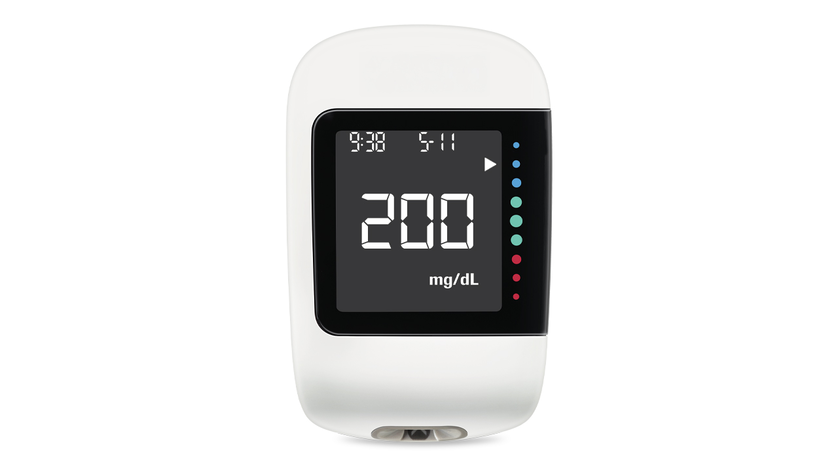ARTICLE AD BOX

It began during a routine conversation over evening tea.Someone mentioned feeling unusually tired lately, nothing alarming, just a lingering fatigue that hadn’t gone away. A friend responded with a familiar suggestion: “Maybe get your blood sugar checked.” The reply came quickly: “I already did that a few months ago at the lab.”That simple exchange led to a question many people silently carry: Is it enough to test blood sugar occasionally at a clinic or a lab, or should it be tracked more regularly at home?Diabetes has quietly become a part of everyday life for many families in India. Today, over 10.1 crore people in the country are living with the condition, and many more are at risk of developing it.¹
Sometimes, people don’t even realise they have it, as early signs often go unnoticed. With changing routines, less physical activity, and more evolving dietary habits, these numbers are gradually increasing. That’s why keeping an eye on blood sugar levels has become a powerful—yet simple—step toward better health and peace of mind.Understanding the two main ways to check blood sugarThere are two key ways to monitor sugar levels: lab-based tests like HbA1c, and at-home checks using a glucometer with a digital app or CGM.
Each has a specific role to play.The HbA1c test, typically done in a diagnostic lab or clinic, gives you an average of your blood sugar levels over the past two to three months. It measures the percentage of glucose attached to your red blood cells. Since these cells live for about three months2, the test provides a long-term view of your blood sugar trends. Doctors usually recommend it every 3 to 6 months, depending on the type and progression of diabetes, to assess how well your sugar is being managed and to identify risks of long-term complications.In contrast, Self-Monitoring of Blood Glucose (SMBG) with a glucometer offers real-time insights, allowing you to check your sugar levels at specific moments, before or after meals, during illness, after exercise, or when you feel off. Continuous Glucose Monitoring (CGM), on the other hand, tracks your sugar levels throughout the day and night, providing a continuous stream of data to help you understand patterns and trends.
This immediate feedback helps you understand how your daily habits are impacting your sugar levels and gives you the opportunity to make quick, informed changes with the help of your treating physician.Together, these methods give you the full picture. HbA1c reflects how you have been doing overall, while SMBG helps you make better decisions day-to-day.Smart tools for daily sugar trackingSelf-monitoring of blood glucose (SMBG) plays a key role in helping you manage your diabetes effectively.
Using a glucometer at home, you can check your sugar levels at key moments like before or after meals, or after physical activity, or during stressful periods etc etc. These quick readings help you connect your blood sugar to your lifestyle choices. For example, testing before and after meals reveals how certain foods affect you, making it easier to adjust your diet based on what works best for your body.Digital glucose monitoring apps and devices take this further by tracking trends over time, alerting you to sudden changes, and allowing real-time data sharing with your doctor.
Many also offer features like meal suggestions, reminders, and personalised tips. By staying consistently connected and informed, you can build healthier habits and make proactive decisions—new to managing sugar levels or focused on long-term stability.A smarter way to stay in controlMonitoring your blood sugar isn’t about choosing between lab tests and home checks—it’s about combining both to stay fully informed. The HbA1c test gives you a long-term view of your blood sugar trends, while self-monitoring (SMBG) offers immediate, actionable insights to guide your daily decisions in consultation with your treating physician or doctor.Consistency is what truly makes the difference. By tracking regularly, recognising patterns, and responding early, you put yourself in a stronger position to feel better, stay ahead of complications, and lead a healthier life. It is a simple, empowering habit that puts you in control, one check at a time.References -
- https://www.pib.gov.in/PressReleaseIframePage.aspx?PRID=2073123#:~:text=As per Indian Council of,of diabetes is 10.1 crores
- https://medlineplus.gov/lab-tests/hemoglobin-a1c-hba1c-test/
- https://medlineplus.gov/ency/patientinstructions/000327.htm
- https://www.ncbi.nlm.nih.gov/books/NBK549816/
- https://pubmed.ncbi.nlm.nih.gov/34292228/
Disclaimer: The views and opinions expressed in the story are independent professional judgments of the experts, and TIL does not take any responsibility for the accuracy of their views. The information provided is indented solely for informational purposes and does not constitute medical advise or endorsement. Please consult your treating physician for more details. This article has been produced on behalf of Roche Diabetes Care India Pvt Ltd by Times Internet’s Spotlight team.



.png)
.png)
.png)
















 8 hours ago
2
8 hours ago
2









 English (US) ·
English (US) ·